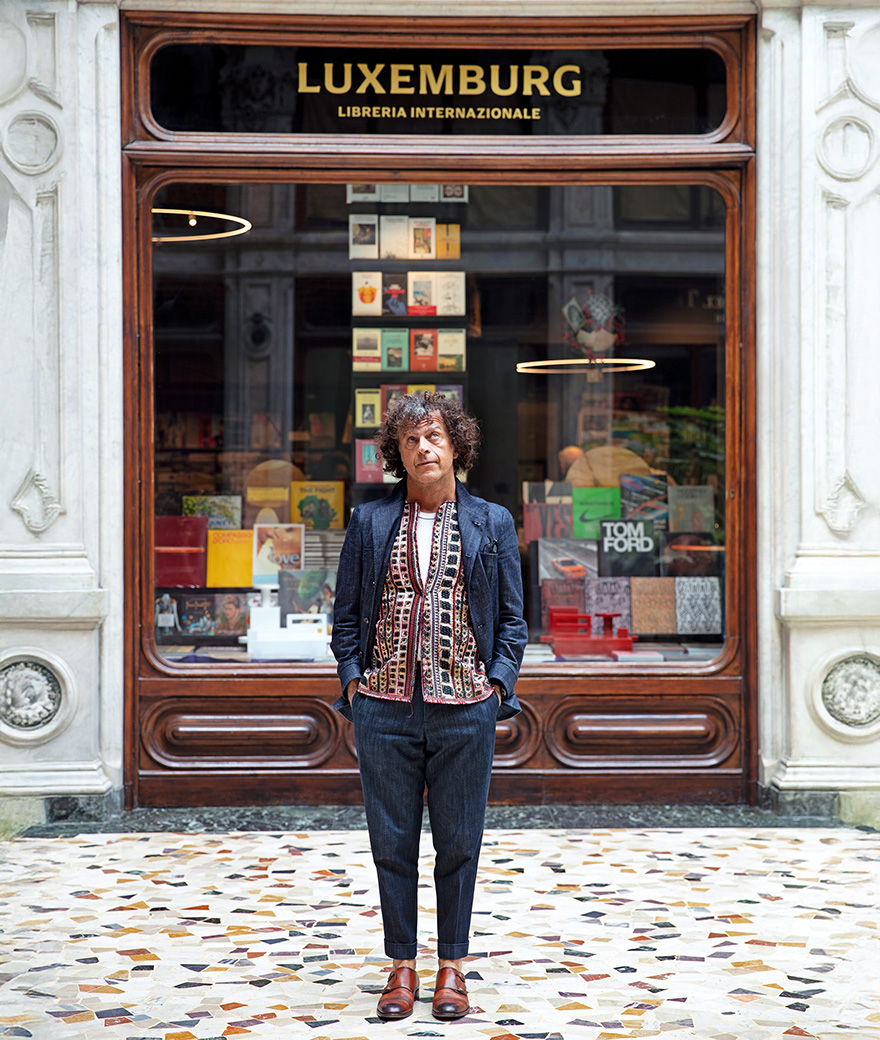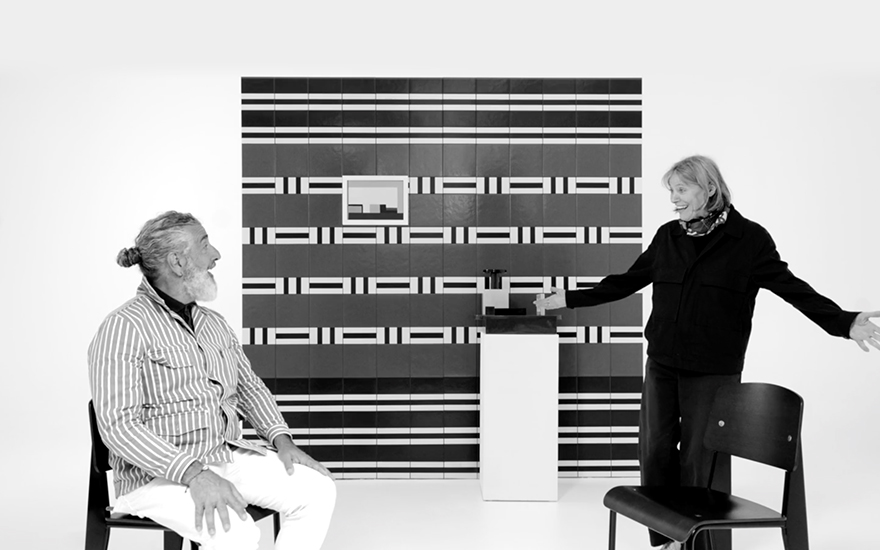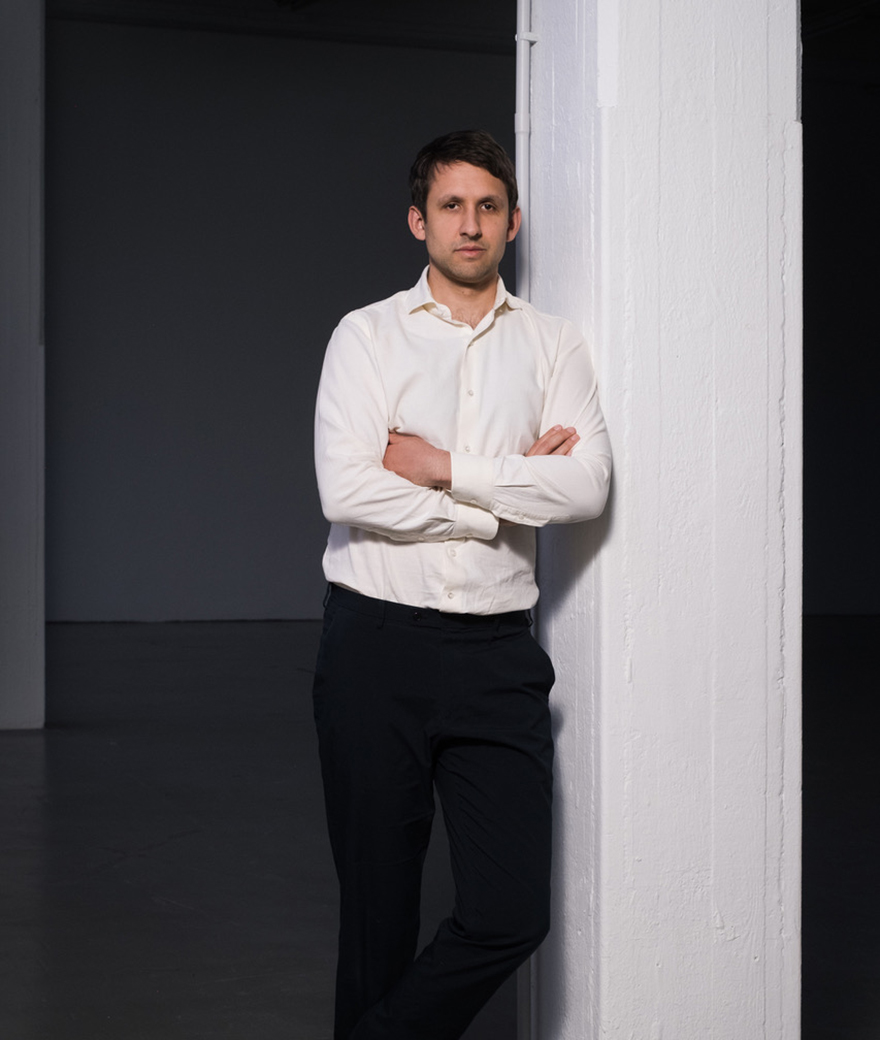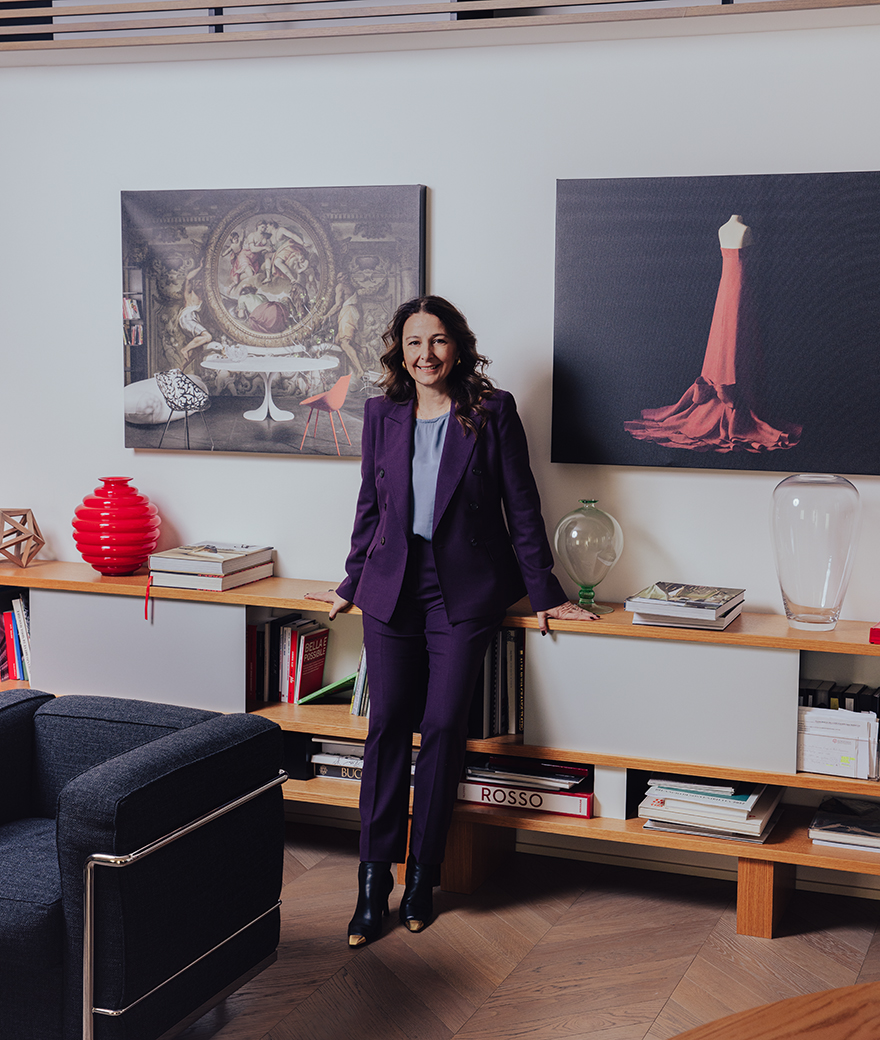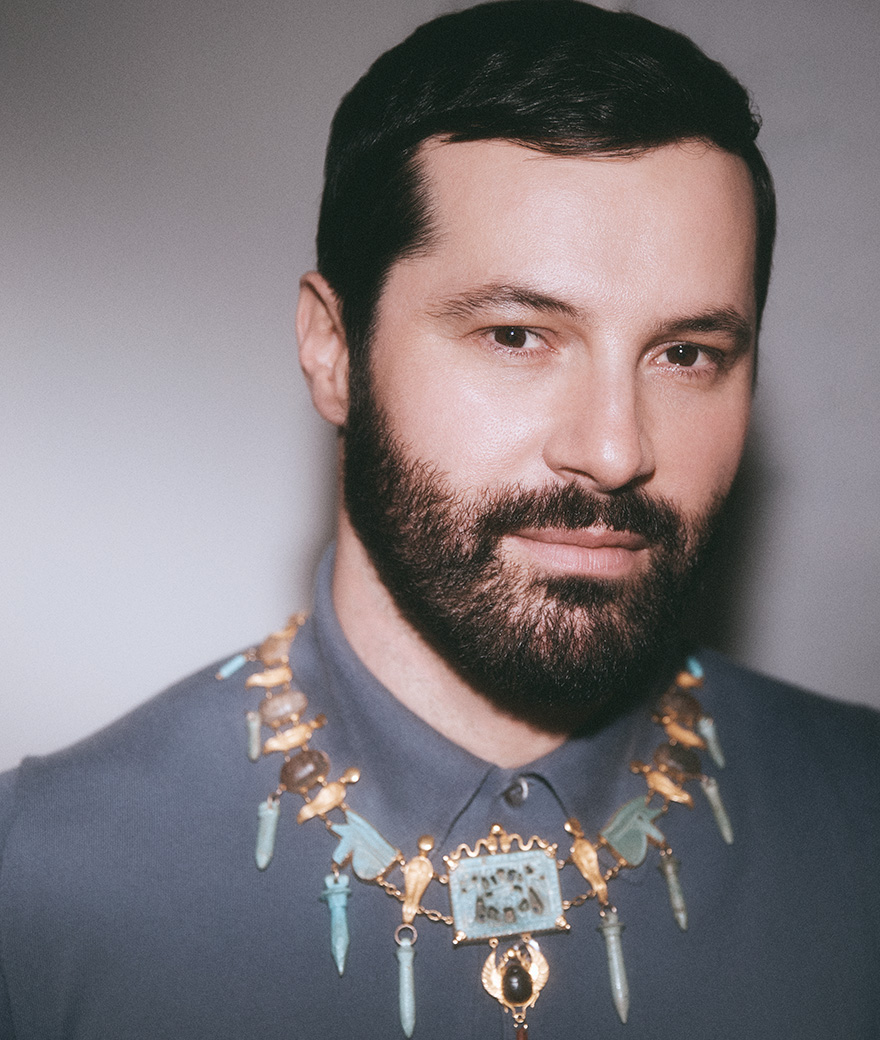A talk with Andreas Murkudis
Andreas Murkudis is the founder and curator of the homonymous space in Berlin where a new exhibition dedicated to Michael Anastassiades, entitled other than lights, inaugurated on October 12. We met him to discuss his collaboration with Mutina, the exhibition set up with Fringe modules and his eclectic approach to curating.
On October 12, an exhibition dedicated to Michael Anastassiades inaugurated at your Potsdamer Straße 81 space. What strikes you most about his work?
What I find most striking about Michael Anastassiades is his ability to excel in so many categories. His light objects are undeniably beautiful—that’s how he started, and that’s what he is perhaps most famous for. Michael has since shown that he is more than capable in other disciplines as well, be it jewellery—or furniture-design. It is this breadth and variety that we want to highlight in other than lights.
The title, other than lights, is deliberately provocative. Michael Anastassiades is best known for his light-related projects, but there is much more to discover in the shadow. What are the most exciting creations you have selected for the exhibition?
I actually think the title is incredibly fitting! Michael regularly crosses the border between design and art. Part of his portfolio are pieces that serve purely artistic purposes rather than being functional, such as the Miracle Chips or the sculpture from his TA-KE collection that will be on display. It is these artworks that I am particularly excited about.
The installation is entirely made of white Fringe modules, the collection created by the Cypriot designer for Mutina in 2023. What is unique about it? How did it take part in the installation?
Usually, our exhibits stand on plain white plinths, so it’s a unique sight that the very support structure of the exhibition is a deliberate part of the exhibition. The Mutina Fringe modules carry other than lights in the truest sense of the word.
What do you think about the path Mutina undertakes with the designers?
Mutina’s portfolio of designers is impressive. They work with some of the best designers of our time—Michael Anastassiades is a case in point.
In your opinion, is there a potential for ceramics yet to be explored?
Definitely! I am a big admirer of ceramics, especially when it comes to interior design. When I moved my store into its current location in the Berlin-Tiergarten neighbourhood in 2013, the architect-duo Gonzalez Haase AAS, with whom I renovated the space, incorporated anthracite ceramic tiles not only on the floor but across the expansive walls. More than just a practical measure, these tiled sections completely transformed the space. There are endless possibilities for how to use ceramics.
How did you approach the world of design? Is there an event that set off the spark?
At university I studied History of Art and in my very first semester I attended a very formative seminar about the Deutscher Werkbund. The precursor to the Bauhaus, the Deutscher Werkbund was established in 1907 to focus on the integrity of the materials in their designs and to move away from the ornamental historicism of the late nineteenth century. It was in my university studies that I gained an understanding (and passion) of the world of design and its rich history. From the very beginning, when I opened my first store in Berlin-Mitte in 2002, the assortment always included fashion and design.
You’re an eclectic curator of almost everything. It’s difficult to imagine a more contemporary role. Do we still need to distinguish between art, design, and fashion?
It’s true! In many ways my stores embody the interface of art, design and fashion. Nonetheless, I also think it is important to distinguish between them. Art needs to be understood as a separate entity. We would be doing art a disservice if we subjugated her to design and fashion. When we curate an art exhibition—as we have done in the past with Silvia Bächli and Mark Steinmetz, for example—I prefer to show the pieces in my dedicated gallery space of Store 77, removed from the fashion in Store 81. Fashion and design can benefit greatly from art. The opposite is not always true. In many ways, art is self-sufficient and should exist outside the realm of practicality and function.
How did the idea of your spaces come about? What is the vision behind them? How do they differ from each other?
Store 81 (the main store) is essentially a total and comprehensive view of what I stand for. Here, visitors can explore my ready-to-wear, accessories, beauty, design objects and furniture selection from the 200 brands I stock. The other two smaller stores on Potsdamer Strasse—Store 77 and Store 98—serve as dedicated spaces where I explore specific brands, themes or artists in more depth. Currently, we’re showing a Bruce Davidson exhibition in Store 77 focusing on his Brooklyn Gang series that will run until November 16.
What will happen after the exhibition? Any plans for the future?
Yes, we’re always brainstorming and planning! Next, we have an exhibition with the German artist Carsten Nicolai in Store 77, opening on November 30. On the same day, we will launch a large installation with the Japanese bag brand Porter-Yoshida & Co in Store 81, highlighting their newest innovation: 100% plant-derived nylon. Our 25th anniversary is coming up in 2027, and I hope to develop products that collaborate with the brands and designers that have been by my side for many years, such as Dries Van Noten. I’m very excited about the future!
“In many ways my stores embody the interface of art, design and fashion. Nonetheless, I also think it is important to distinguish between them. Art needs to be understood as a separate entity. We would be doing art a disservice if we subjugated her to design and fashion. [...] Fashion and design can benefit greatly from art. The opposite is not always true.”

